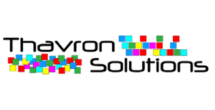Organizations strive to complete the vision and the mission within the value structure they are given.
Value reporting is designed to define the key performance indicators (KPI), which align best to the organization’s goals for the year. By reporting these KPI’s, the CEO can at a glance decide if the organization is on target or if or where adjustments are needed.
Annual goals for organizations and individuals are those that are defined by the CEO and the Board of Directors. From the CEO’s goals, the business leaders create goals that will make the CEO’s vision materialize. Hopefully, the goals are then cascaded down the chain of command, until everyone within the organization has goals defined which are meeting the vision for the coming year.
A well designed ITFM solution not only builds the KPI report for the IT department but also includes metrics that reflect how IT is supporting the rest of the organization in meeting its goals. Unless your organization is one that sells IT as an end product, the entire IT budget exists as a support for the organization to be more empowered, more productive, provide better consumer/citizen supports, be more innovative, and/or compete better in the market.

Line by line budget to actual reporting is helpful and important for the IT Staff members who have to manage the daily business of running the infrastructure. However, this report has little utility to the C-suite members. The CIO dashboard must ultimately report on the projects which are the highest priority, the successes or failures of the IT department to meet the needs of internal and/or external customers, the vendors which can be leveraged for volume discounts, the amount of budget which is available to undertake another project (if/when it presents itself) and so on. This dashboard will look significantly different than one that is available to a service provider, who will be interested in how his/her service is performing. A strong, powerful ITFM office can understand that different audiences have very different views of an organization and can meet the needs of the cost accountant, the service provider, the IT management team, the M&A team, and the CIO, along with other customers of the office. Additionally, the ITFM tool allows that every report comes from the same source, the G/L, thus alleviating the painful realization that promised savings are just not obtainable. This isn’t an easy proposition, but this type of value reporting brings the ITFM analyst and office to their fullest potential.
The IT Financial Analyst and Value Reporting
“The best financial models are simple enough for anyone to understand, yet dynamic enough to handle complex situations.” — Tim Vipond.
Organizations strive to complete the vision and the mission within the value structure they are given.
Annual goals for organizations and individuals are those that are defined by the CEO. From the CEO’s goals, the remaining C-suite personnel is given their goals. Hopefully, the goals are then cascaded down to the C-suite’s chain of command, until everyone within the organization has goals defined which are meeting the CEO’s vision for the coming year.
Value reporting is designed to define the key performance indicators (KPI), which align best to the organization’s goals for the year. By reporting these KPI’s, the CEO can at a glance decide if the organization is on target or if or where adjustments are needed.
A well designed ITFM solution helps build the KPI report for the IT department, which ultimately will feed into a report for the CEO that includes KPI’s from other departments, such as Human Resources, Marketing, etc.
Reporting from the ITFM office must be varied
Line by line budget to actual reporting is helpful, to the analysts who are putting together a high-level report; however, this report has little utility to the C-suite members. The CIO dashboard must ultimately report on the projects which are the highest priority, the successes or failures of the IT department to meet the needs of internal and/or external customers, the vendors which can be leveraged for volume discounts, the amount of budget which is available to undertake another project (if/when it presents itself) and so on. This dashboard will look significantly different than one that is available to a service provider, who will be interested in how his/her service is performing. A strong, powerful ITFM office can understand that different audiences have very different views of an organization and can meet the needs of the cost accountant, the service provider, the IT management team, the M&A team, and the CIO, along with other customers of the office. Additionally, the ITFM tool allows that every report comes from the same source, the G/L, thus alleviating the painful realization that promised savings are just not obtainable. This isn’t an easy proposition, but this type of value reporting brings the ITFM analyst and office to their fullest potential.
